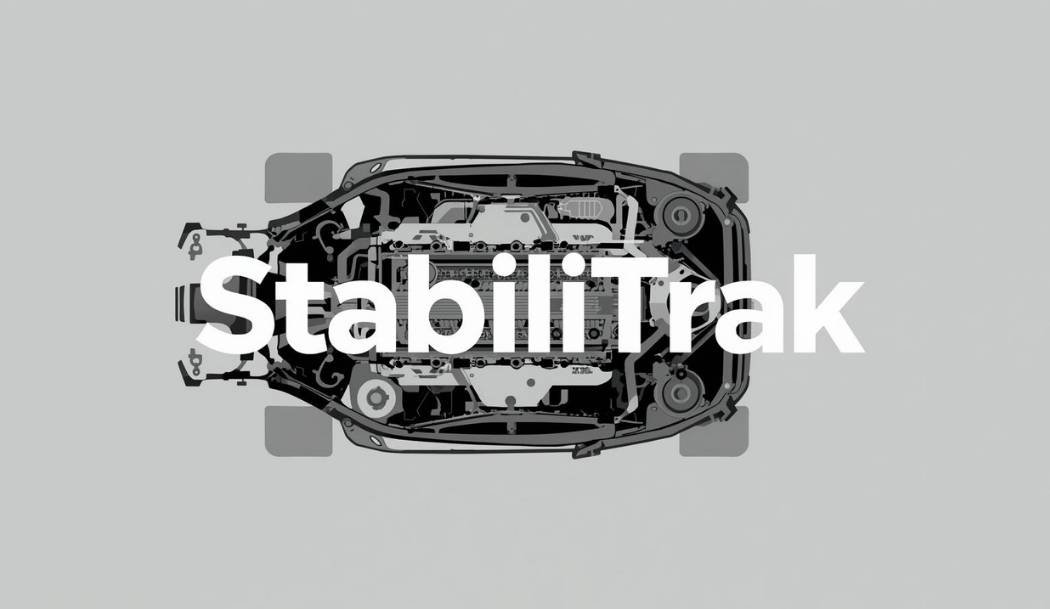Introduction: A Hidden Guardian on the Road
Imagine driving on a rainy night. The road is slick, your tires lose grip, and your car begins to slide. In that split second, most drivers panic. But instead of spinning out, your car corrects itself, helping you regain control. This invisible helping hand is what StabiliTrak does.
StabiliTrak is more than just a piece of car technology. It acts like a guardian angel built into the wheels and steering system, quietly watching over every turn and lane change. Most drivers barely notice it until they need it. And when they do, it can make the difference between a close call and a serious accident.
In this article, we’ll explore the full picture of StabiliTrak — what it is, where it came from, how it works in real life, its role beyond cars, and what the future may hold.
What Is StabiliTrak?
At its core, It is General Motors’ version of electronic stability control (ESC). Think of it as a brain that monitors your steering wheel, wheels, and vehicle movement in real time.
When the car senses that it’s not following the direction you’re steering — such as sliding sideways on ice — StabiliTrak steps in. It can apply brakes to individual wheels, adjust engine power, and help the driver regain stability.
To simplify, imagine walking on a frozen sidewalk. When you slip, your arms spread out naturally to balance your body. It does the same thing for your car, except it uses sensors, brakes, and computers.
The Origin of StabiliTrak
The roots of StabiliTrak go back to the 1990s. Car makers around the world were racing to create smarter safety systems beyond traditional anti-lock brakes (ABS).
General Motors partnered with Bosch to design a stability system that would reduce crashes caused by skidding or rollovers. In 1997, It made its debut on Cadillac models. At the time, it was marketed as a luxury safety feature.
Over the years, it became standard across many Chevrolet, GMC, Buick, and Cadillac vehicles. By 2012, electronic stability control became mandatory on all new cars in the U.S., making StabiliTrak not just a premium option but a core part of driving safety.
How StabiliTrak Works in Real Life
It doesn’t work alone. It relies on a network of sensors and systems that communicate like a team of pit crew members.
- Steering Angle Sensor: Tracks where the driver wants the car to go.
- Yaw Sensor: Measures if the car is rotating or spinning.
- Wheel Speed Sensors: Check how fast each wheel is turning.
- Brake System: Can apply brake pressure to specific wheels.
- Engine Control: Adjusts power output when needed.
When these parts talk to each other, the system can make decisions in milliseconds — faster than any human reaction.
For example:
- If the car understeers (turns less than expected), They may brake the inside rear wheel.
- If the car oversteers (turns more sharply than intended), it might brake the outside front wheel.
- If traction is lost, it can cut engine power to prevent wheel spin.
It’s like having a driving coach and a safety net rolled into one.
FOR MORE BLOGS PLS READ THIS DAILYLIFEWAYS
Real-World Applications of StabiliTrak
1. Everyday Driving Safety
Most drivers don’t even realize when It saves them. A wet curve or sudden lane change can easily trigger it, silently keeping the car in line.
2. Business and Fleets
Companies that run delivery vans or trucks benefit from fewer accidents and lower insurance costs thanks to stability control.
3. Education and Learning
Driving schools often highlight It to teach new drivers about modern car safety. It reinforces the idea that technology and human skill work together.
4. Off-Road Adventures
SUVs like Chevrolet Tahoe or GMC Yukon rely on It for controlling slides on dirt, mud, or snow. It allows families to travel safely even in tough terrain.
5. Society at Large
By reducing crashes, StabiliTrak helps save lives and reduces hospital costs. It’s not just about one driver — it’s about public safety.
StabiliTrak vs. Traction Control vs. ABS
Many people confuse StabiliTrak with other systems. Here’s the difference:
- ABS (Anti-lock Brakes): Prevents wheels from locking up during braking.
- Traction Control: Prevents wheels from spinning when accelerating.
- StabiliTrak (ESC): Keeps the car stable when it starts to skid or lose direction.
Think of it like this:
- ABS is your parachute when stopping suddenly.
- Traction Control is your grip shoes when running on ice.
- StabiliTrak is your balance coach making sure you don’t fall sideways.
Together, they form a trio that makes driving safer than ever.
Future Implications of StabiliTrak
StabiliTrak today is impressive, but the future could make it even smarter. With the rise of AI, connected cars, and autonomous driving, stability systems will evolve into predictive guardians.
- AI Integration: Cars may predict a skid before it even happens by analyzing road data from satellites and weather reports.
- Ethics: Will cars decide between protecting the driver or avoiding pedestrians? Stability control will be part of those tough choices.
- Opportunities: Insurance companies may reward drivers with them-equipped cars with lower premiums.
- Risks: Overreliance on technology might reduce driver skill. If systems fail, drivers could be less prepared to react.
In short, It is not just about wheels and brakes. It’s a stepping stone toward fully autonomous safety systems.
Best Practices: Driving with StabiliTrak
Even though It is powerful, drivers still need good habits. Here are best practices:
- Don’t Ignore Warning Lights – If “Service It” appears, get it checked.
- Drive for Conditions – Technology helps, but physics still rules. Slow down on ice.
- Keep Tires Healthy – Worn-out tires reduce It effectiveness.
- Regular Maintenance – Sensors need cleaning and inspection.
- Learn Your Vehicle – Each GM model may use StabiliTrak slightly differently.
Think of It as a safety belt. It protects you, but only works best when you use it responsibly.
Conclusion:
StabiliTrak is more than a car feature. It represents the blending of human need and machine intelligence. Just as seat belts once revolutionized safety, electronic stability control has reshaped modern driving.
At a deeper level, StabiliTrak symbolizes how we, as humans, build technology to protect ourselves from our own limits. It’s a reminder that progress comes not just from speed and power but from balance and control.
On the road of life, They teaches us a simple truth: sometimes the smartest path forward is not about going faster, but about staying steady.
FAQs
1. What does StabiliTrak mean?
StabiliTrak is GM’s electronic stability control system that helps drivers maintain control of their vehicles.
2. What does “Service StabiliTrak” mean?
It means the system detected a fault. It may be a sensor, wiring, or module issue and should be checked by a mechanic.
3. Can I drive with the StabiliTrak light on?
Yes, but your stability system may not work. Drive carefully and get it repaired soon.











